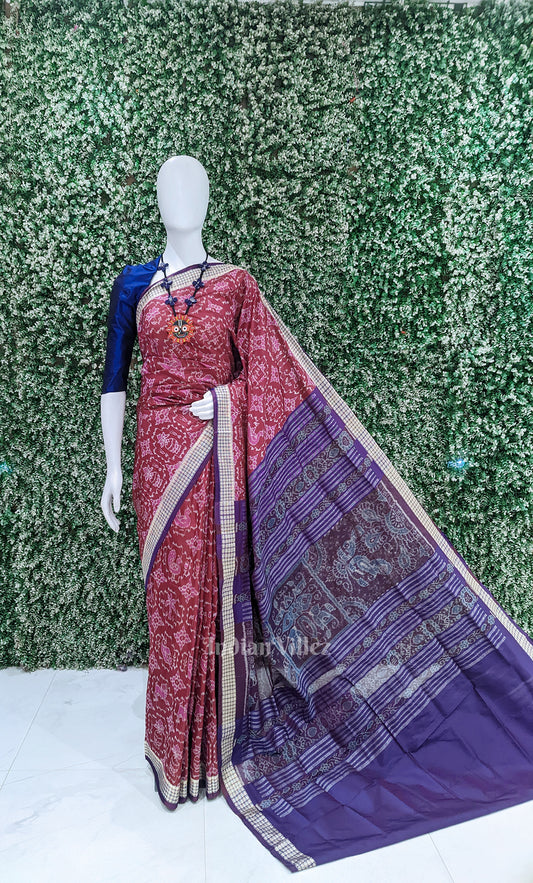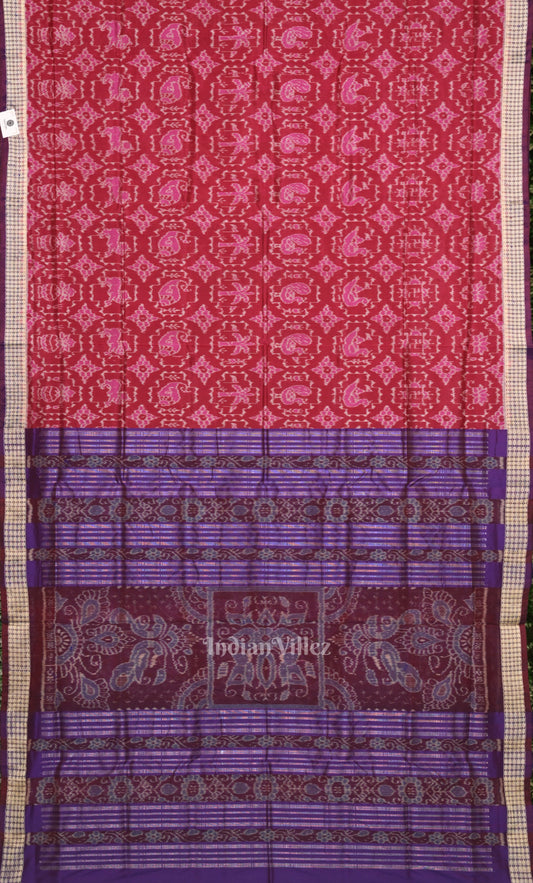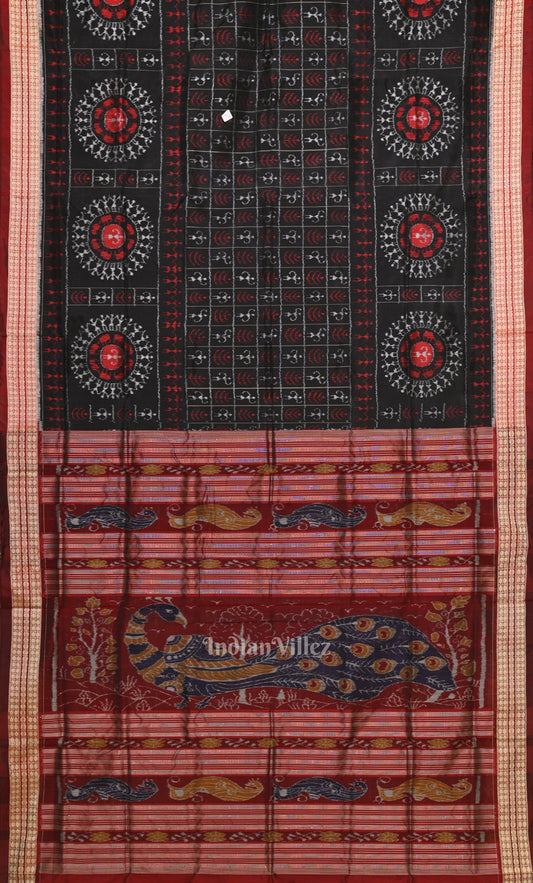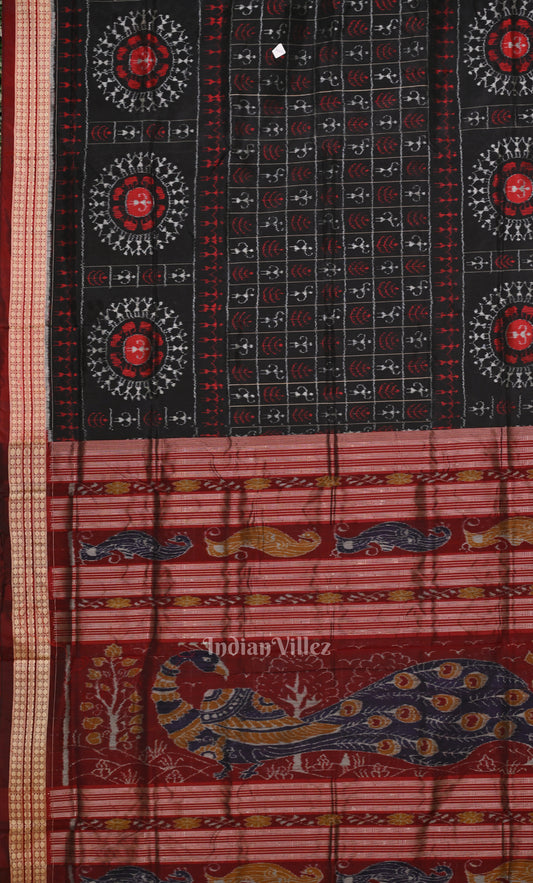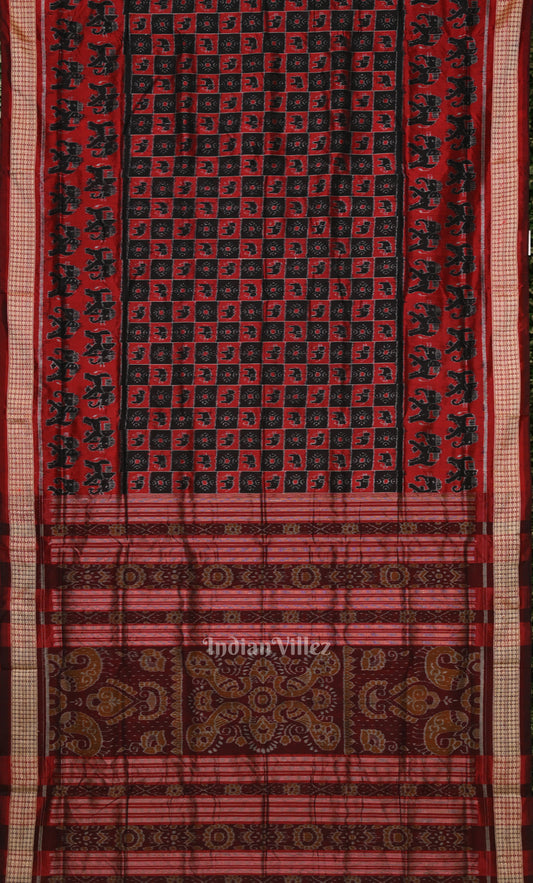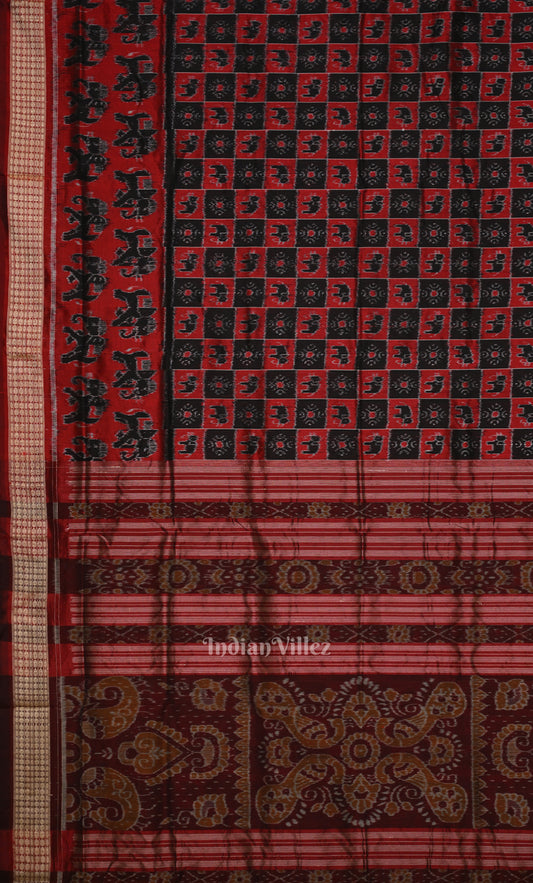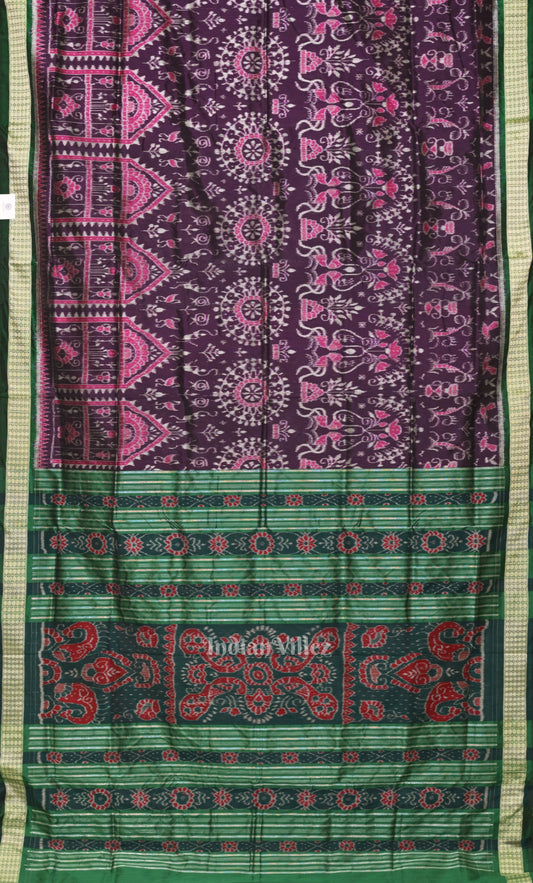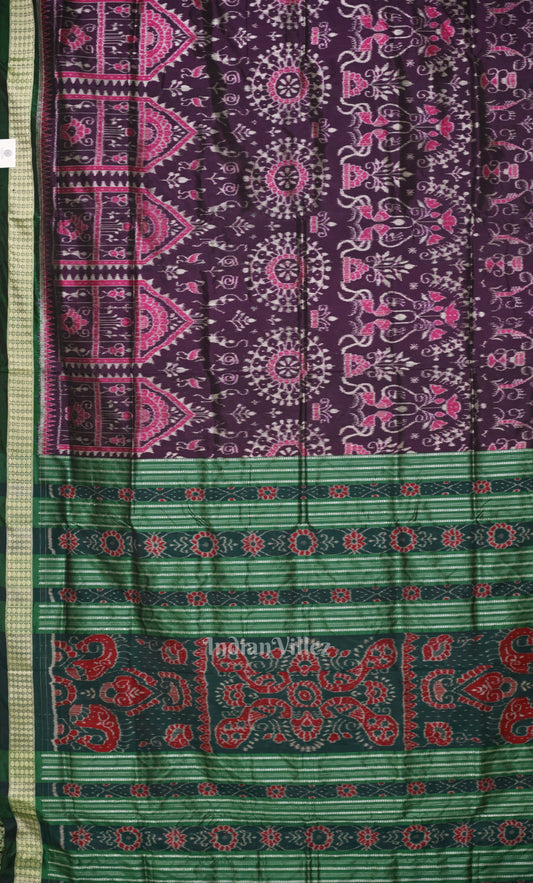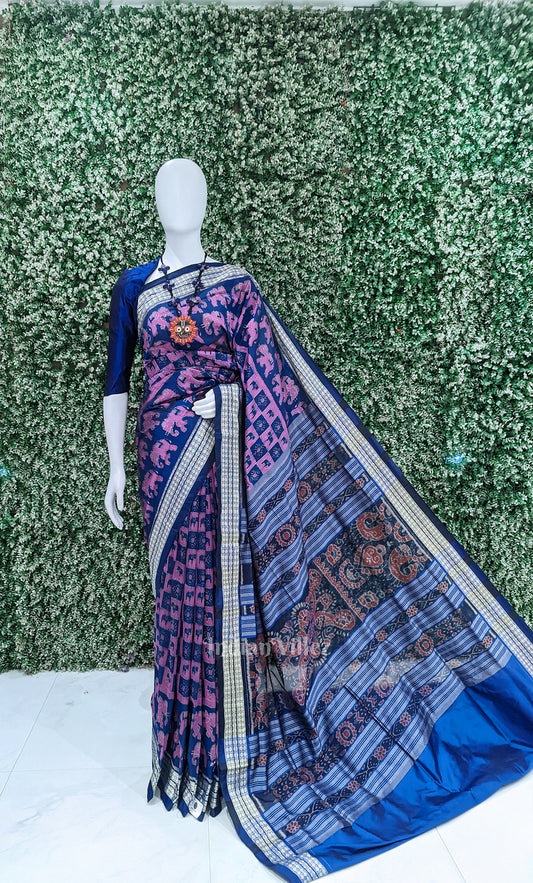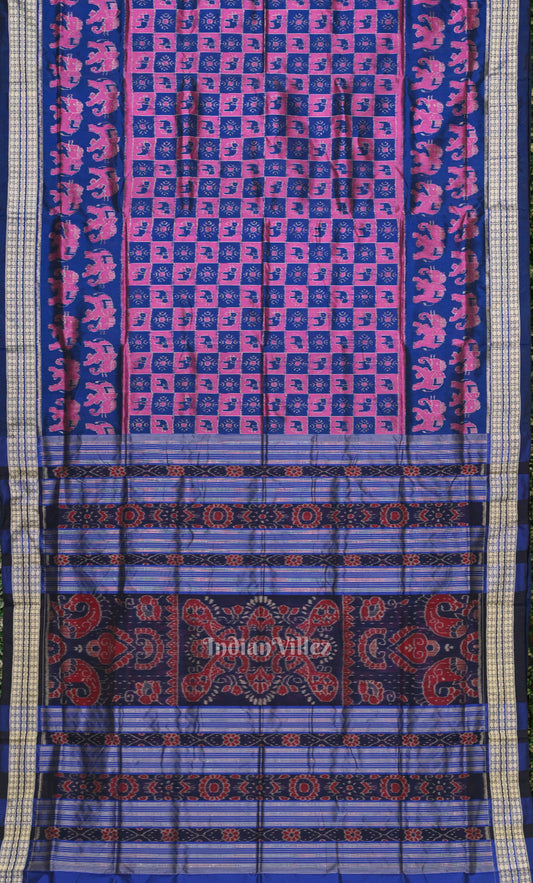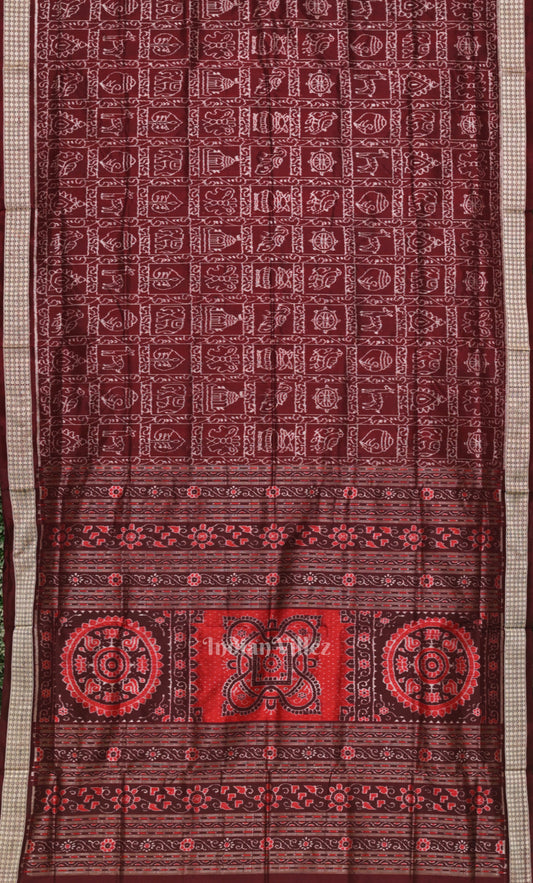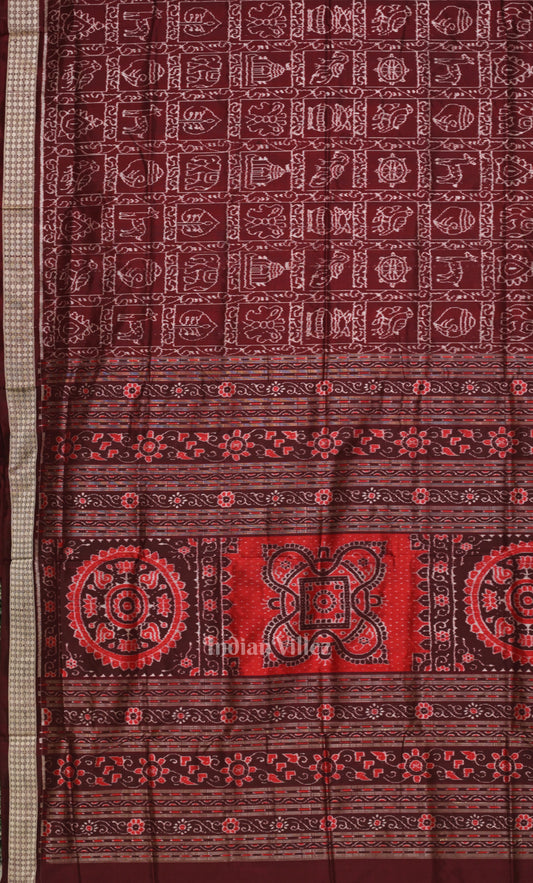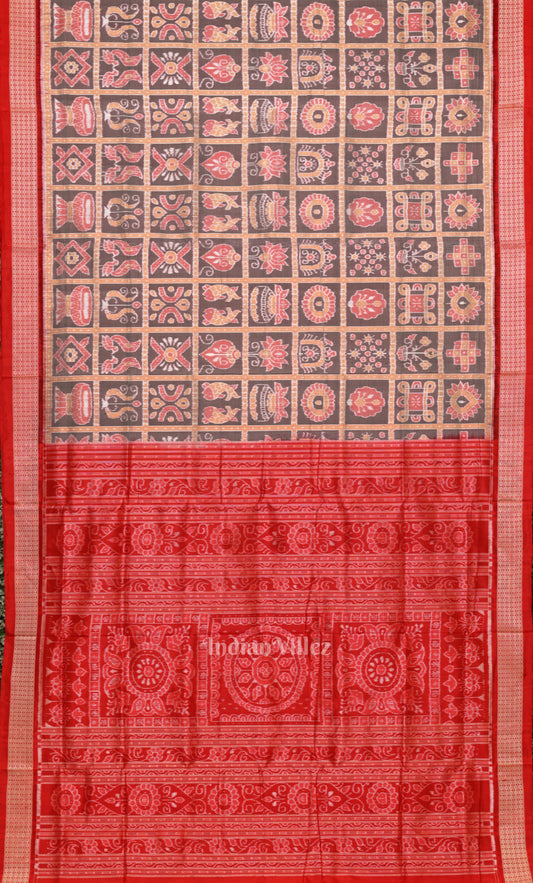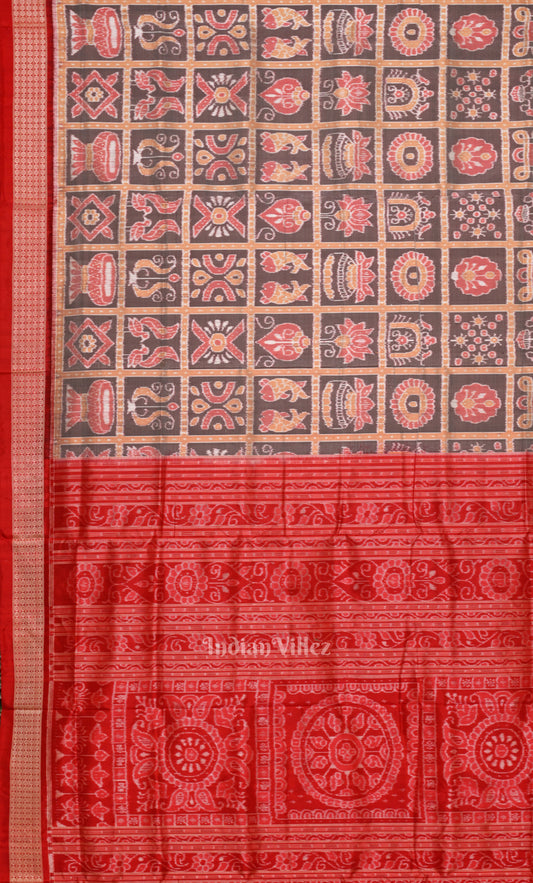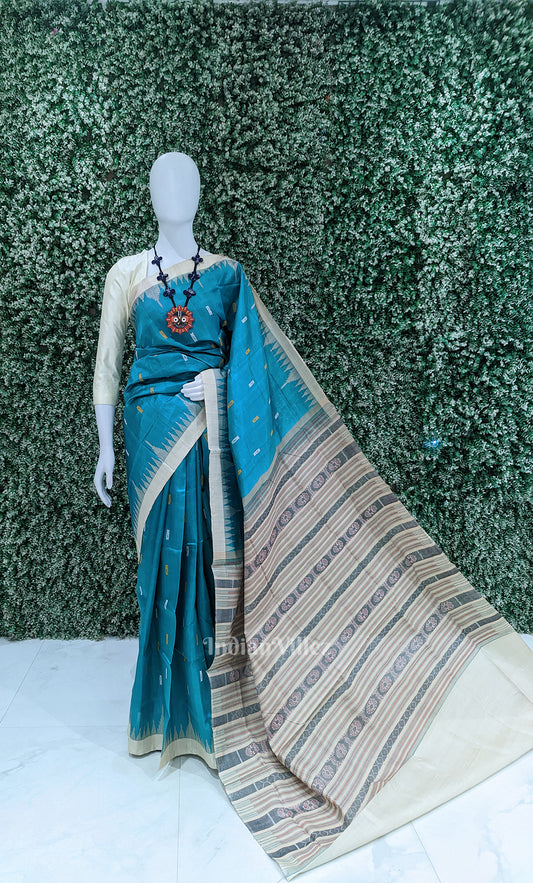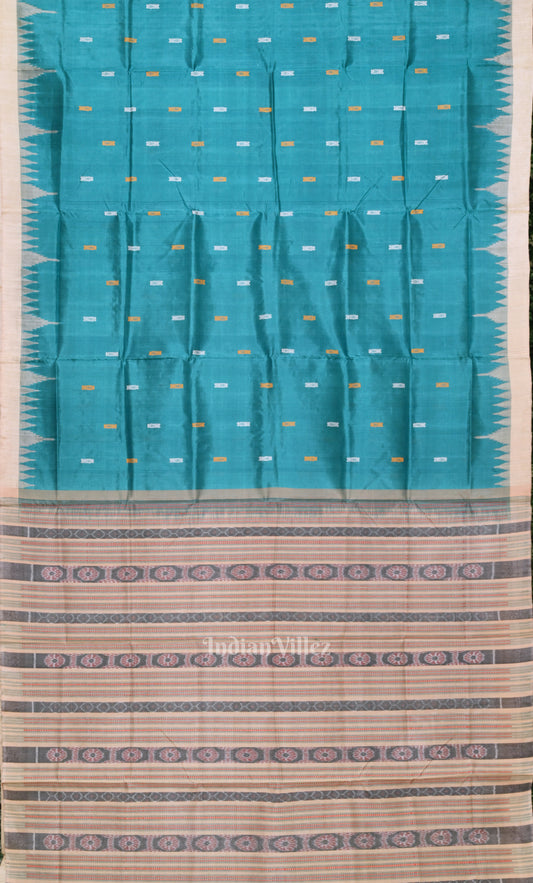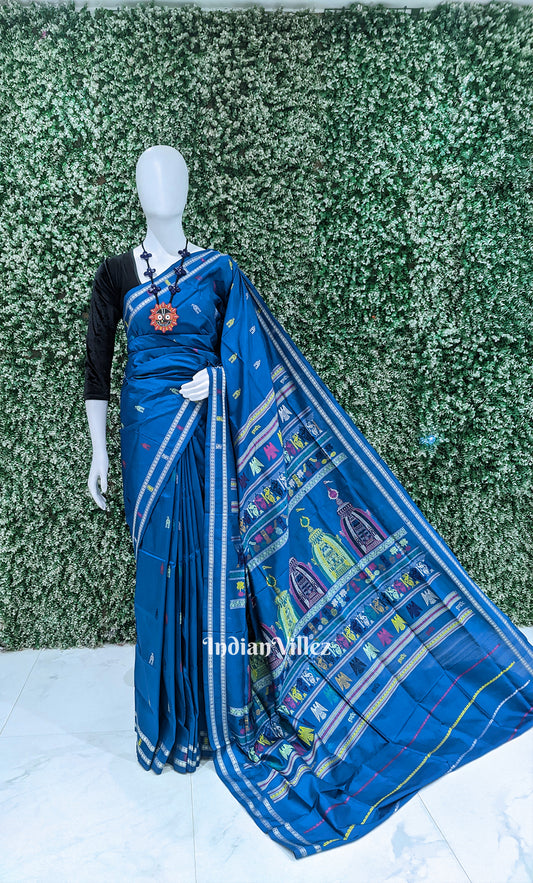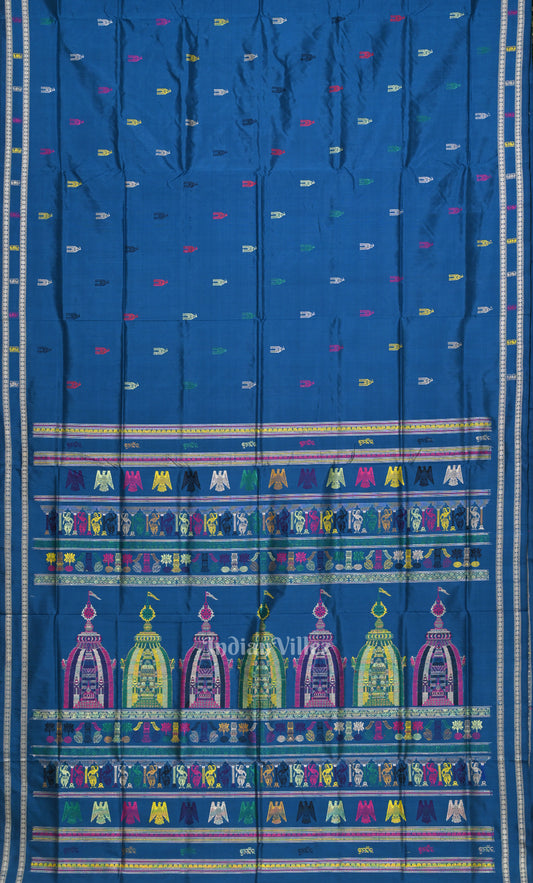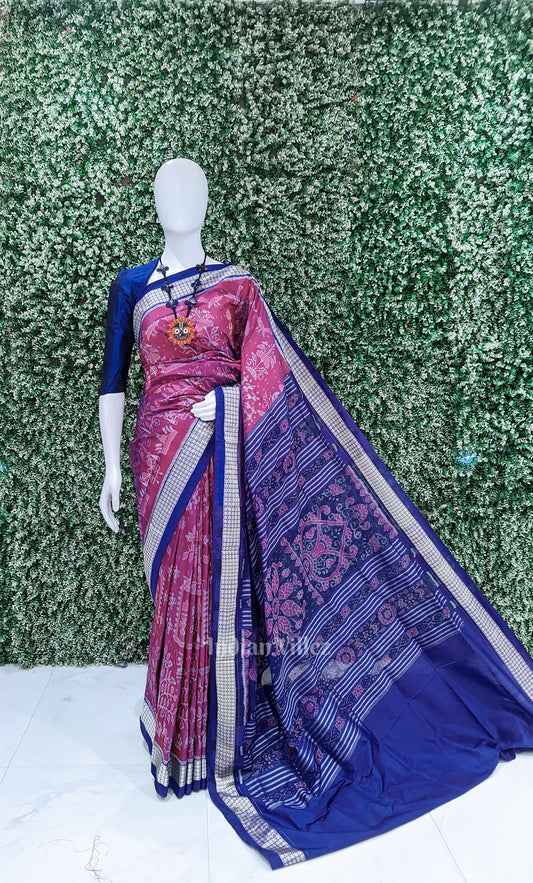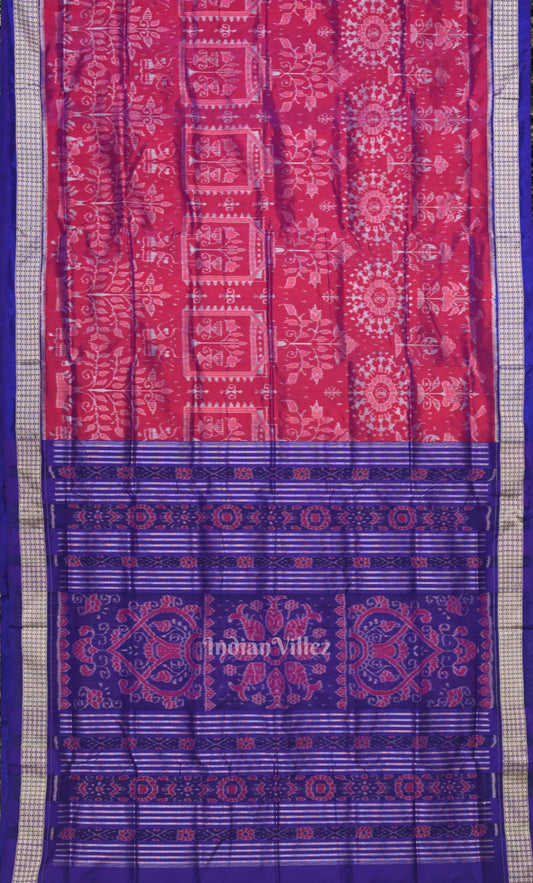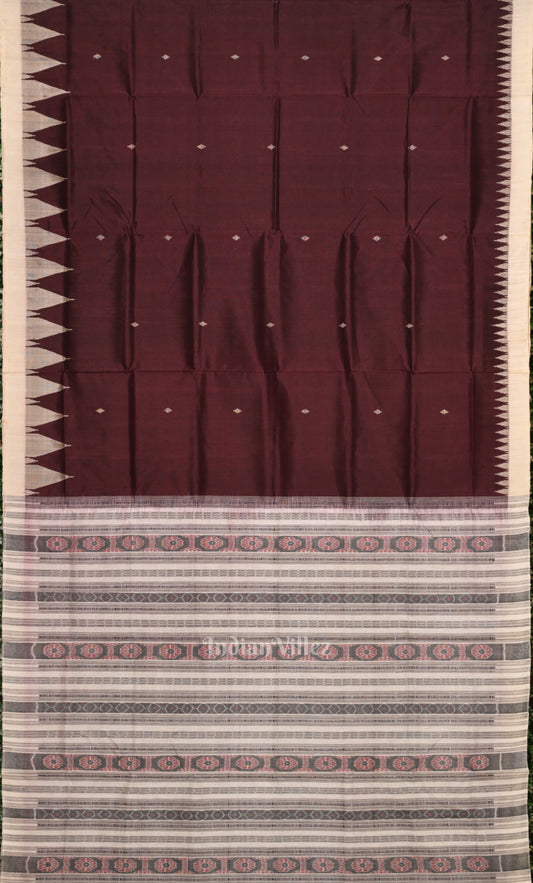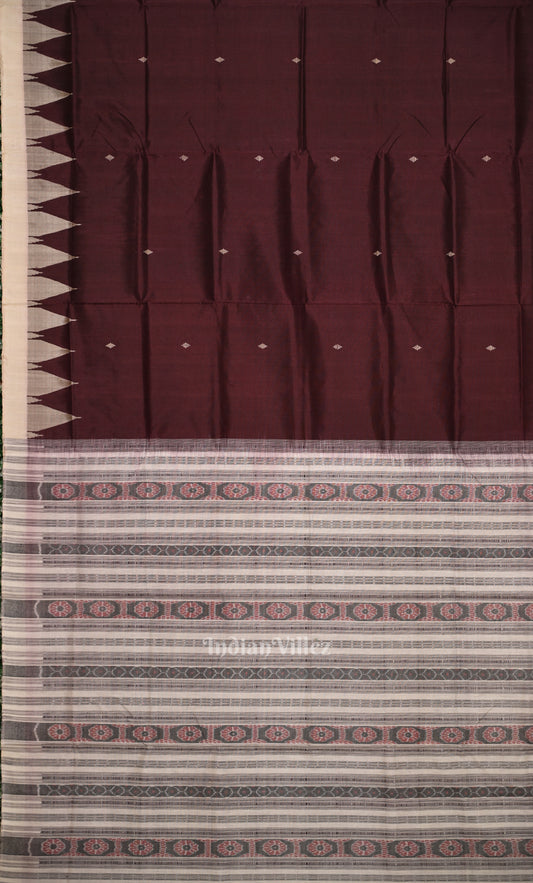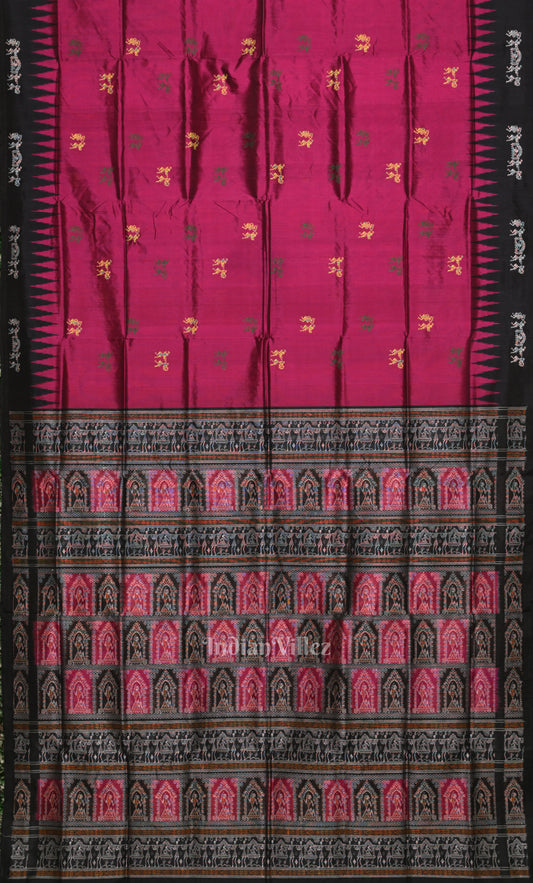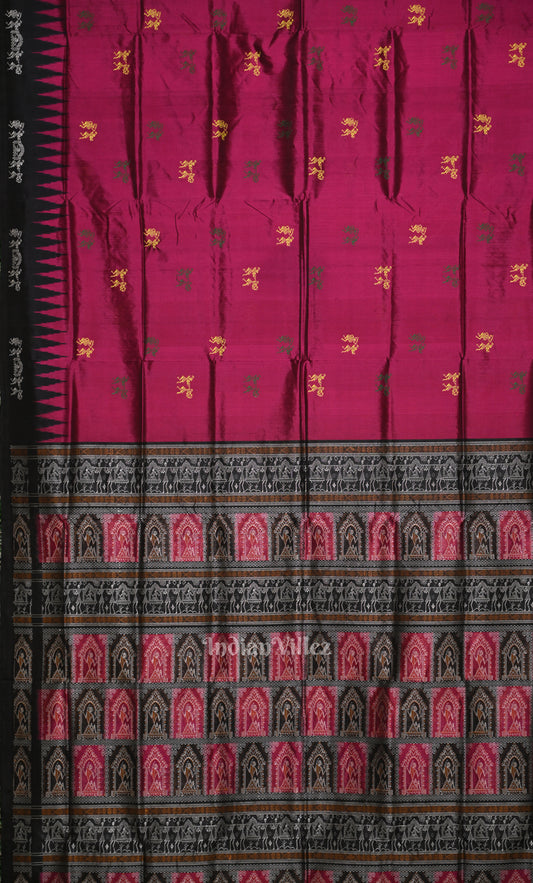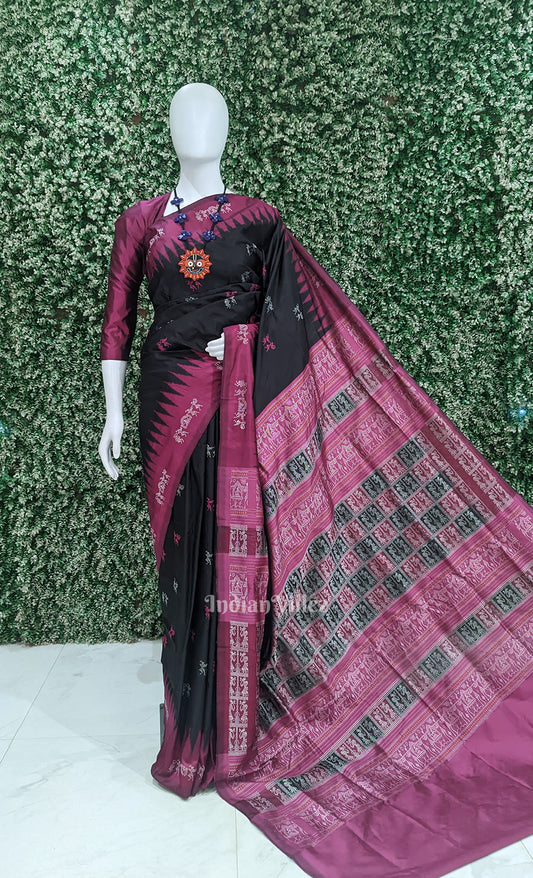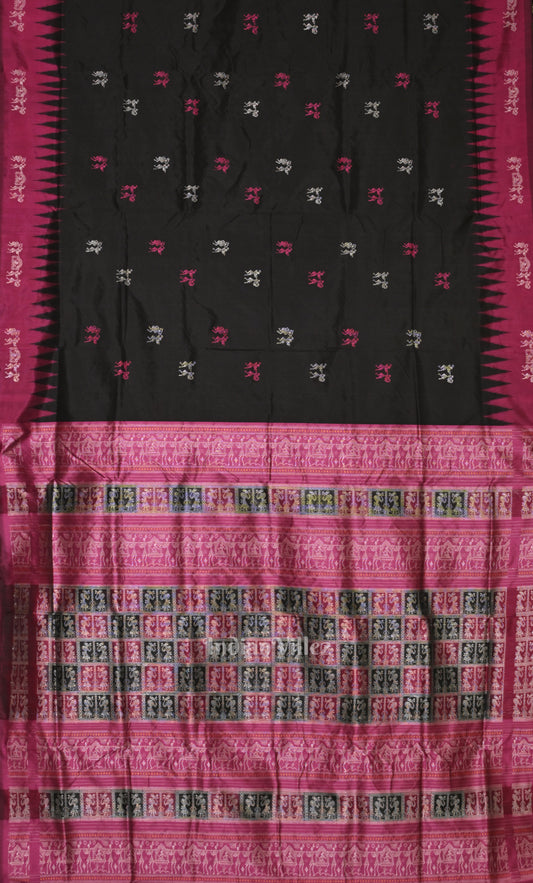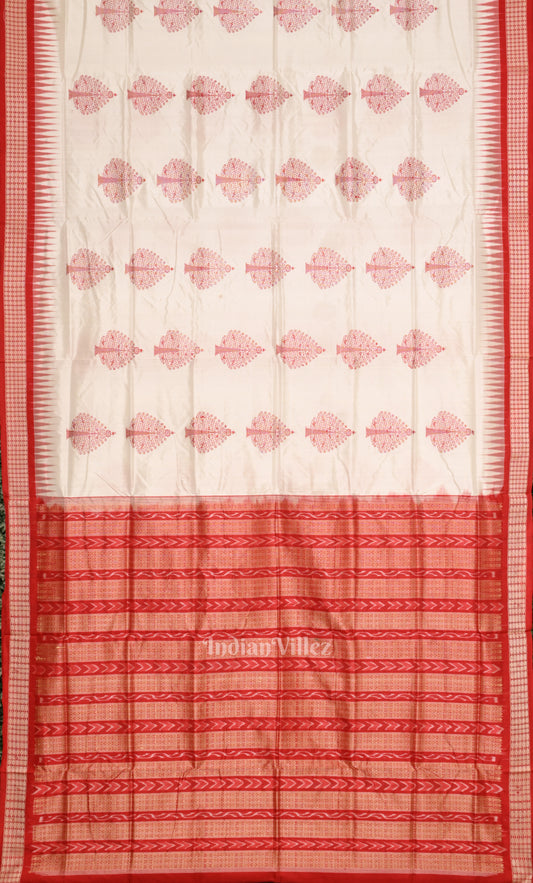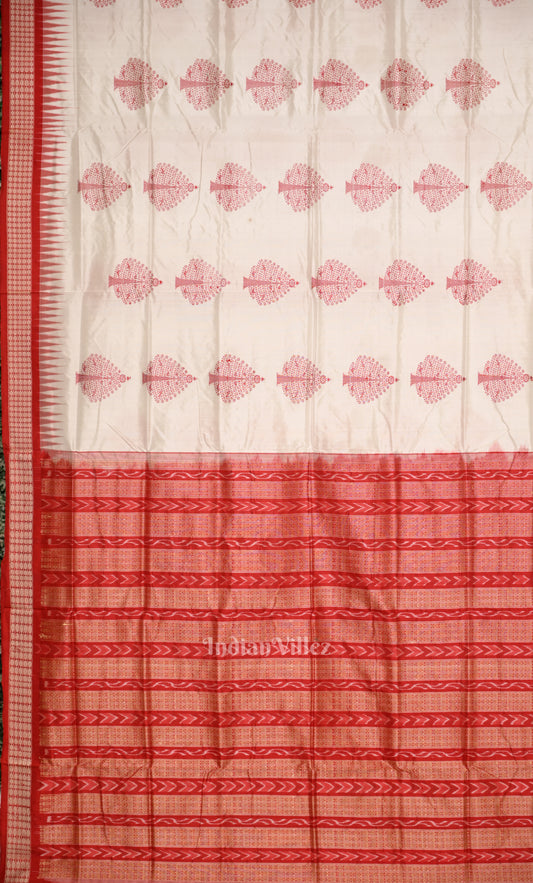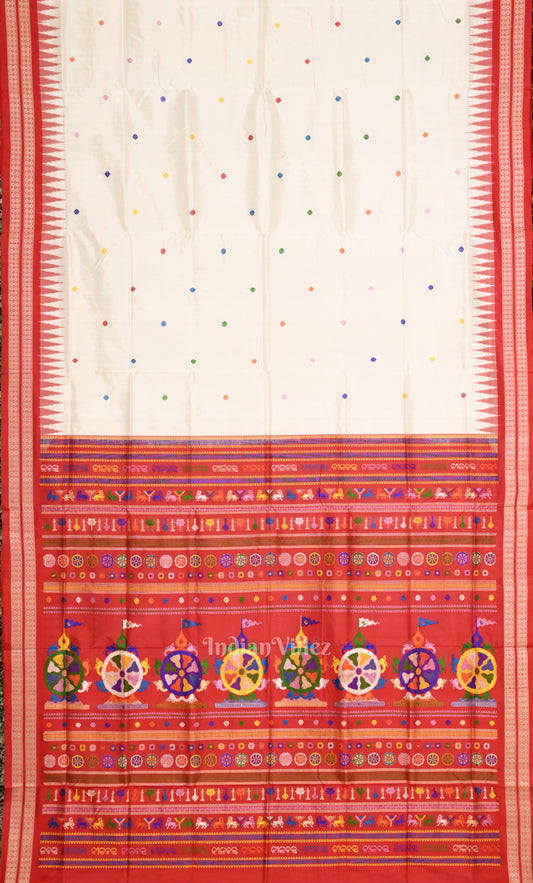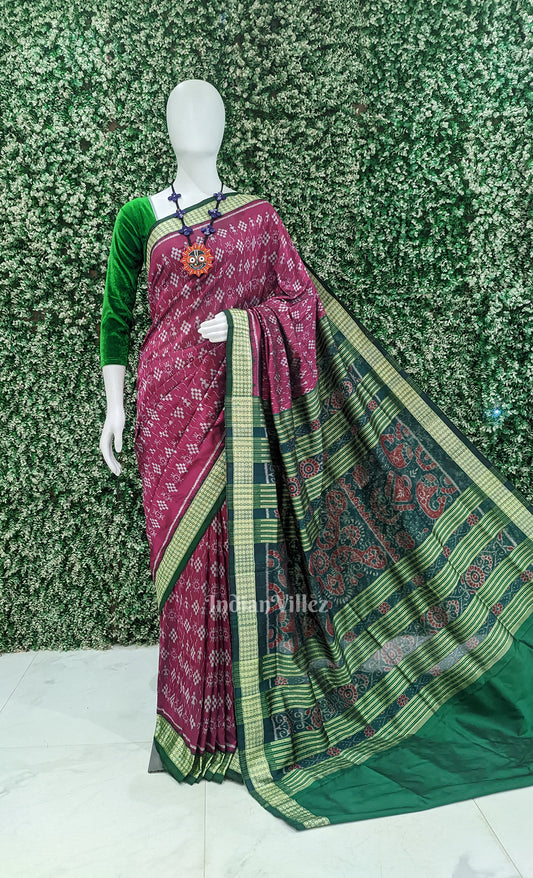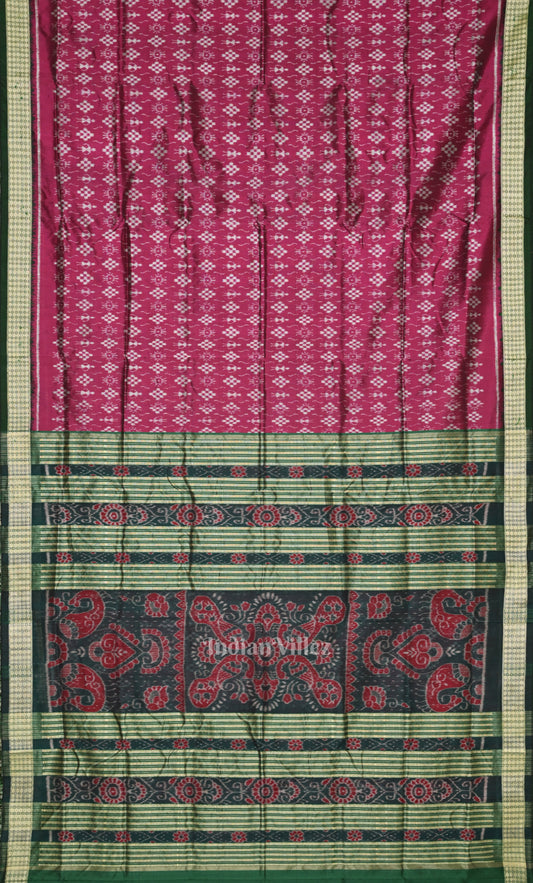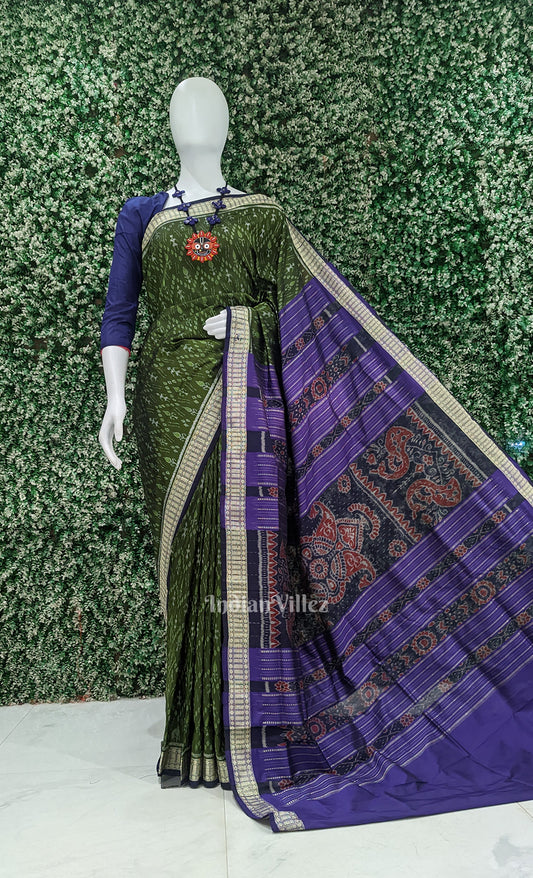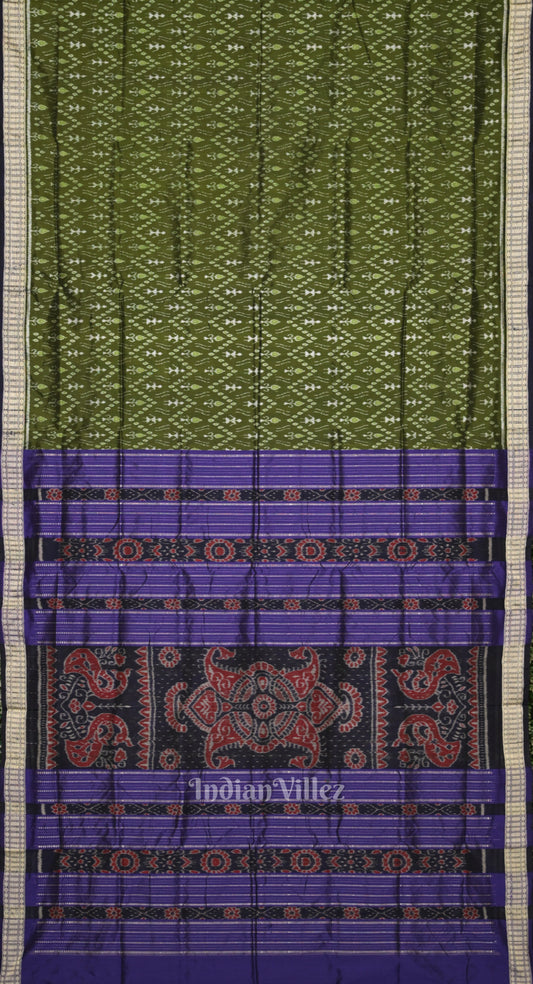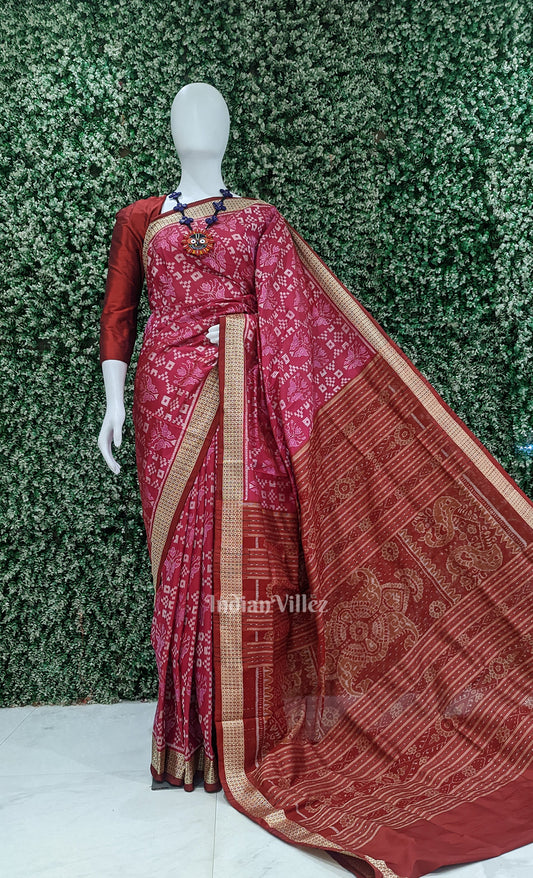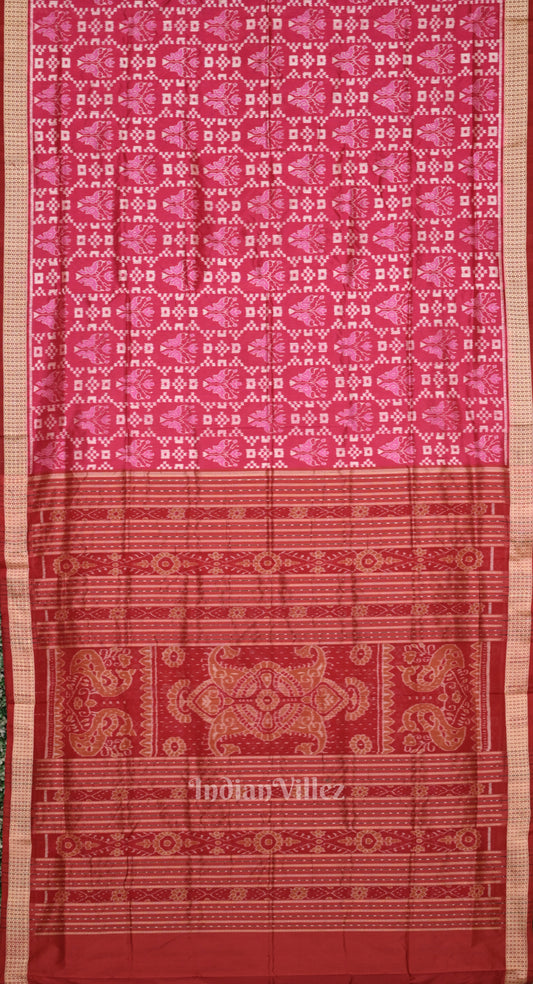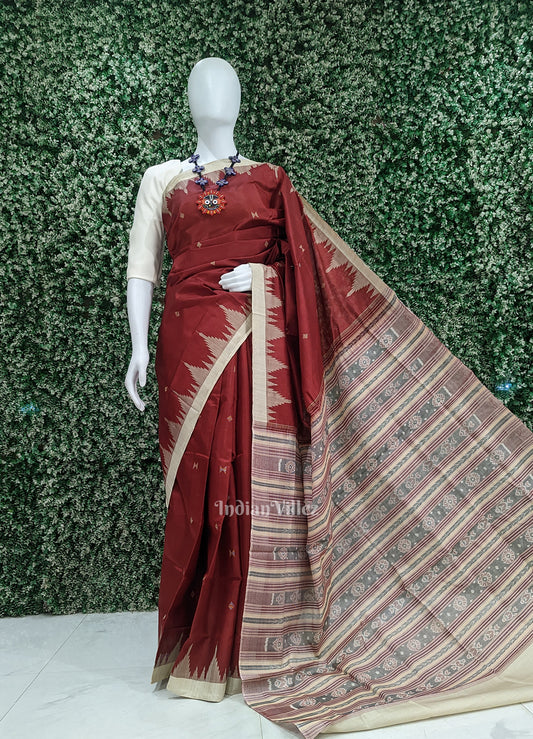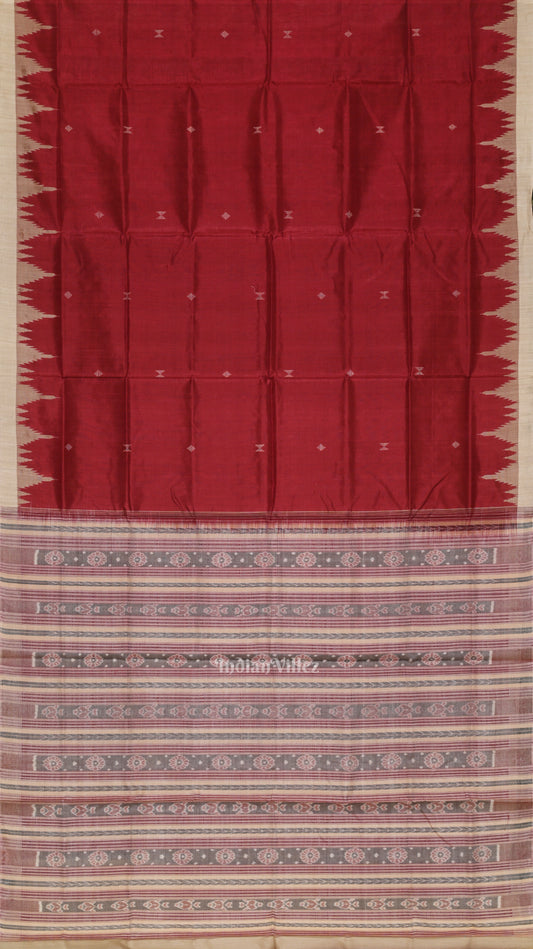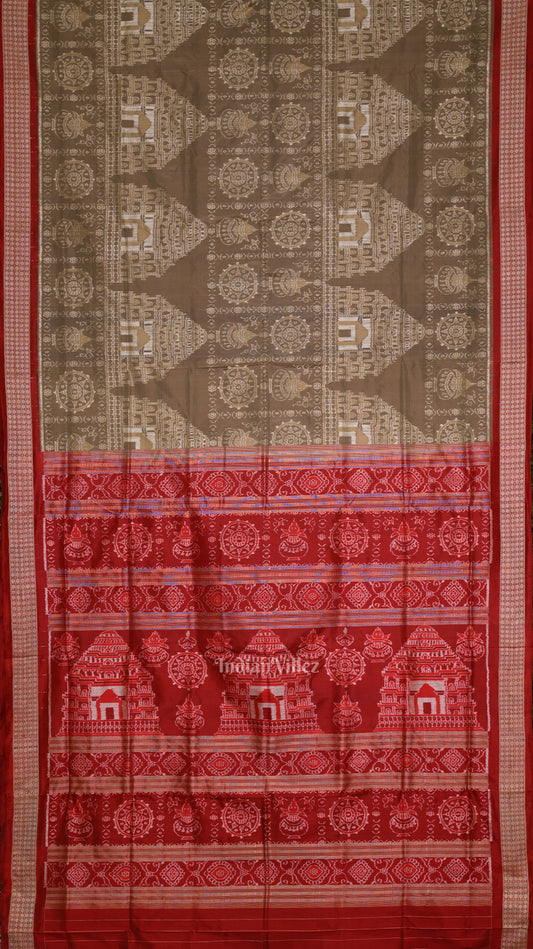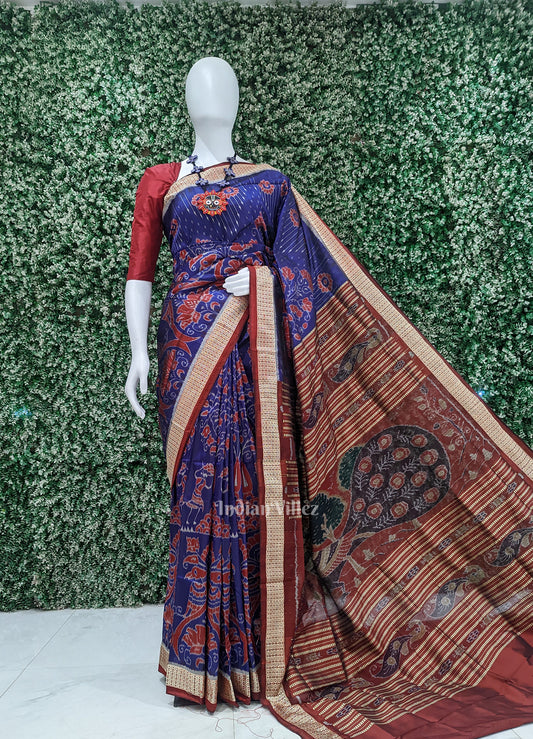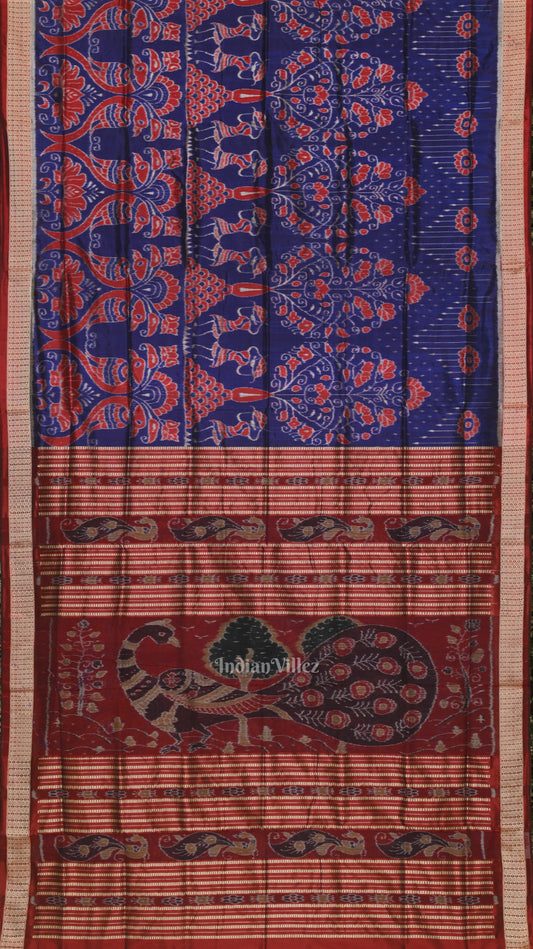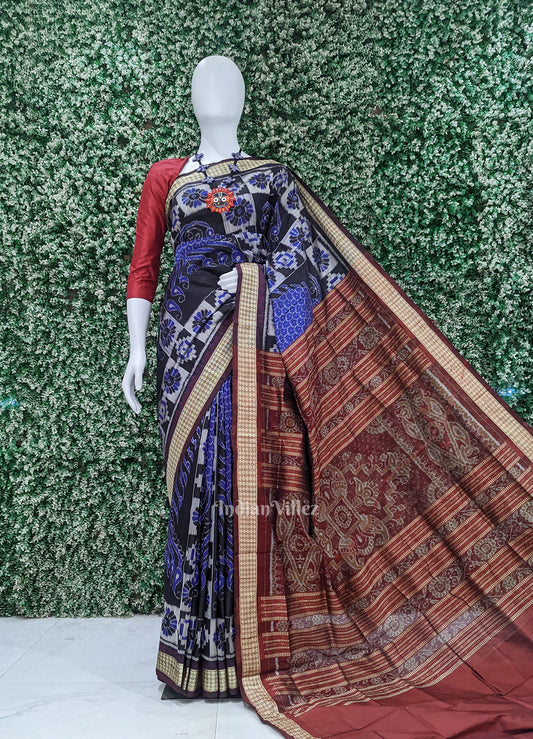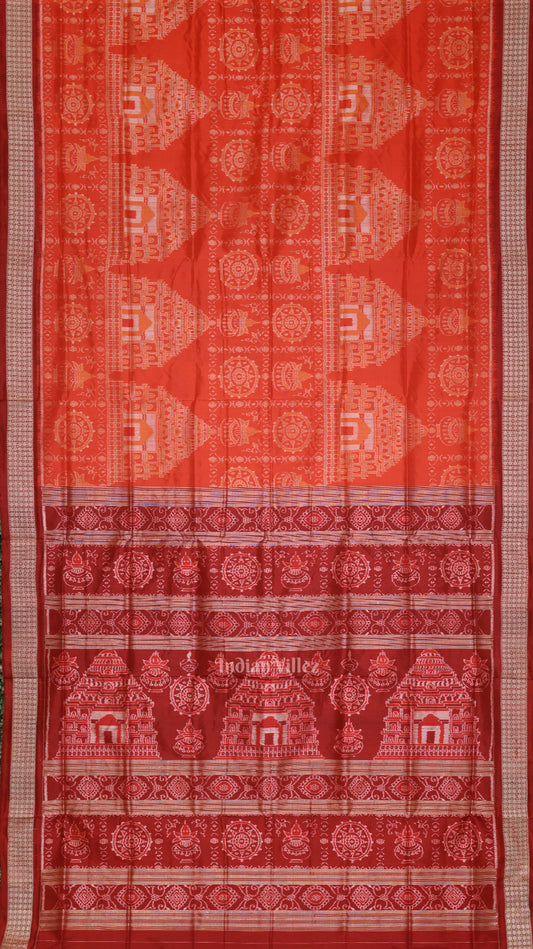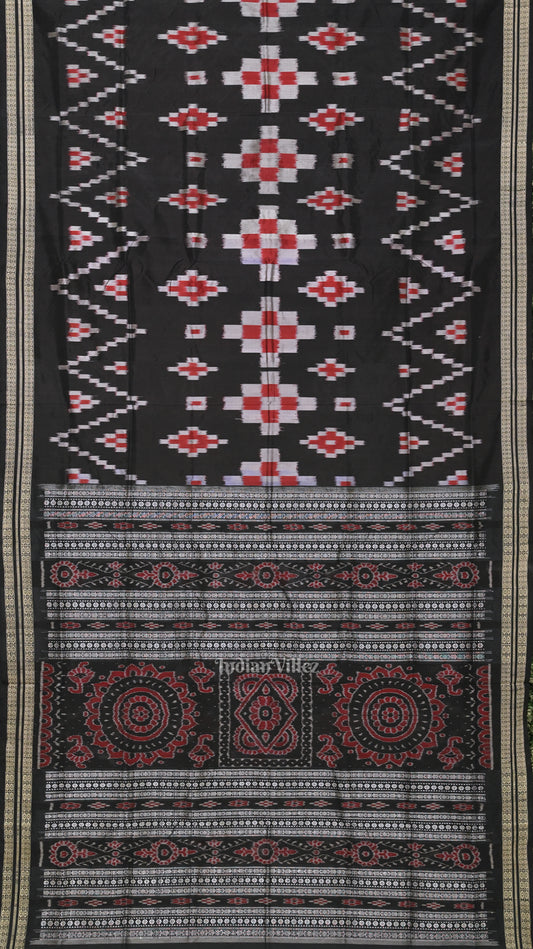Sambalpuri Handloom Silk Saree
Sambalpuri Saree comes from the land of Goddess Samalei which signifies strength and kindness at the same time. The same effort is being made to make the sarees look distinctive and alluring at the same time. The famous Bandha prints of Odisha are of the sambalpuri silk ikat saree. Sambalpuri Silk Sarees are widely loved in the state for extraordinary woven pallus and borders of contrasting colors and meaningful designs from Odisha temples.
The Sambalpuri handloom sarees are not just a piece to be worn rather are a fabric which tells a story to the society. Sambalpuri uses the double ikat weaving which is famously known as Sambalpuri Ikat handloom. This intricate way of weaving pushes the handloom to be one of the hyped handlooms in the weaving world. The Sambalpuri Silk Sarees were started off by the Bhulia community but became popular when Late Mrs. Indira Gandhi wore it. The prints of Sambalpuri Handloom Sarees are tie dyed and seem to be magic woven on yarns. The Odisha handloom sambalpuri Ikat sarees present some extraordinary creativity. Along with the bright colors and gorgeous textiles this pure sambalpuri saree becomes one of a kind.
History of Sambalpuri Saree
The Origin of saree goes back to civilization and the need to cover their bodies. With time different handlooms were weaved. The Bhulia Community started the art of Sambalpuri Ikat sarees. Records say, after the fall of Chauhan empires the reign of Mughals began in 1192 A.D. In the terror of the atrocity , the Bhulia community fled from the northern part of India and made their way to Odisha. They settled down in the western part of Odisha and began their livelihood with weaving sarees. And then began the famous and articulated art of Sambalpuri Ikat Sarees. The art involves a lot of time, creativity and work into it.
How is Sambalpuri Saree Made?
Sambalpuri uses the double ikat weaving which is one of the hyped handlooms in the weaving world. Sambalpuri Silk saree uses Ikat technique which is a resist dyeing and weaving technique. The textile craft of Sambalpuri Ikat Sarees is known as bandha kala or ‘tie art’ in Odisha. Ikat is a long process which can take between three days to three months depending on the design.
It begins with a dyeing technique that is used to pattern fabrics. The silk yarn used for sambalpuri Ikat saree is first segregated. Then these yarns are measured and are induvial tied and dyed. The tying and dying continues till the pattern is properly and accurately coloured. Once the desired colors come in the result, the threads are detached from the bindings. After the yarns are spun into bobbins and pins and they are loaded to the beams. All the process of Sambalpuri Ikat saree doesn't stop here. The desired pattern is then weaved and the Sambalpuri Saree gets its form.
The process of wrap and weft is very important in the process of Ikat which weaves beautiful sarees like Sambalpuri Sarees. “Warp” refers to the foundation layer of weaving while the “weft” means the thread woven through to create both fabric and design.
Why is Sambalpuri Silk Saree Famous?
Sambalpuri Ikat Saree is not just work of sweat and time, it is extremely beautiful and contemporary. There are many varieties in sambalpuri saree which brings a lot of fans. There is pasapalli, boita, bichitrapuri, nabakothi, and many other sambalpuri sarees to wear and flaunt. It was in the cave for many years and was only known to the people of Odisha. In the 1980s when the then Prime Minister late Indira Gandhi wore it , it brought a lot of attention. And since then the saree has been popular amongst celebrities and is widely worn all over the world. The patterns and motifs are now widely loved and Thee Sambalpuri Sarees are very popular.
What is Special About Sambalpuri Ikat Saree?
Sambalpuri sarees have a reserved space in my heart. Since these sarees are handwoven these are highly significant over other machine made garments. Sambalpuri sarees have intricate details and motifs and the most common patterns in a Sambalpuri saree are conches, flowers, and wheels. Small and detailed motifs distinguish a Sambalpuri saree from all other traditional fabrics or apparel.
How Many Types of Sambalpuri Saree Are There?
There are a variety of Sambalpuri Sarees and they are Pasapalli, Boita, Nabakothi, Bichitrapuri, Tribal theme, Utkala Laxmi and Jungle theme. All the sarees have a good demand and are loved worldwide.
Why is Sambalpuri Saree Expensive?
Handloom Sarees are usually expensive because of the time and effort put into it. Along with it Sambalpuri sarees are made of pure silk which elevates the price of the sarees. With detailed work, distinctive design, style and workmanship and long history, Sambalpuri Sarees are highly priced.
What is the Difference Between Bomkai and Sambalpuri?
The basic difference between Bomkai and Sambalpuri sarees is just the origin and design. Bomkai sarees belong to Bomkai and Sambalpuri sarees hail from Sambalpur. Besides, Bomkai sarees have Zari-work whereas Sambalpuri sarees have Bandhkala work.
IndianVillèz's collection of the finest pure and handwoven Sambalpuri sarees. Each saree is a labour of love and a handwoven story written in eternal Sambalpur (District in Odisha).
